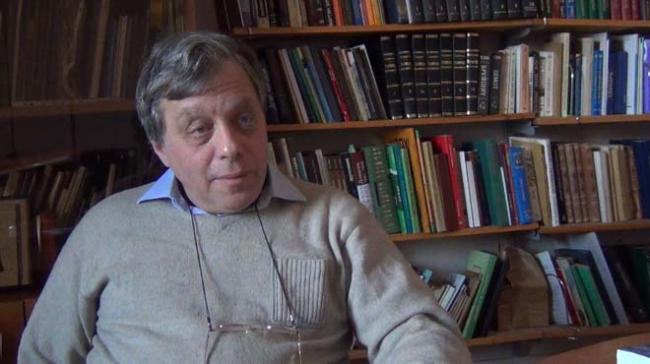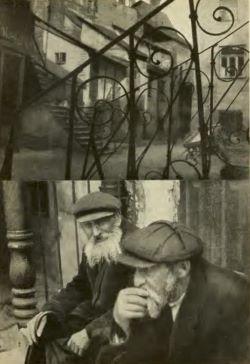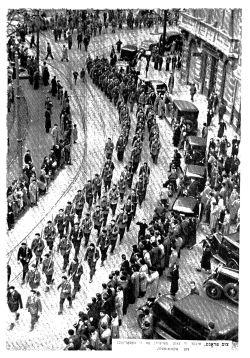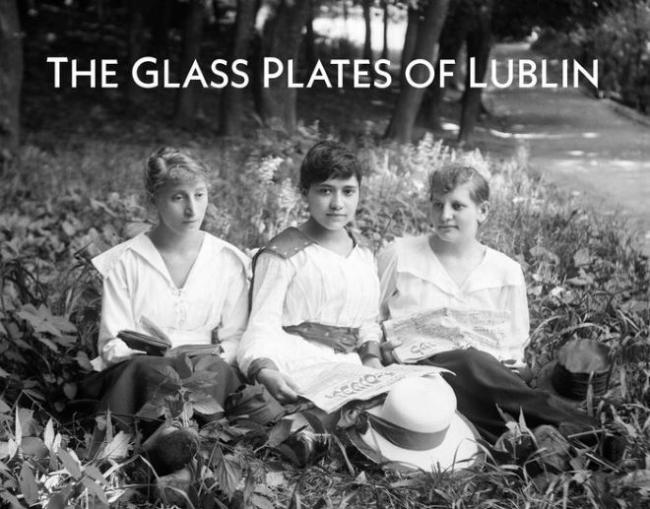Weekly Reader: Can Visual Art be “Yiddish?”
When it comes to the visual arts it’s often difficult to explain how or if there’s anything “Yiddish” about them. A Yiddish book or play is Yiddish. A Yiddish theater song or klezmer tune is Yiddish. But is a painting or a photograph “Yiddish”? While the specifics can sometimes be difficult to parse, in general the answer is yes—visual arts have been a part of Ashkenazi Jewish culture, just as they have been everywhere else. And while this conversation often pertains to painting, it also applies to photography, perhaps the ultimate modern medium. On June 16, the Yiddish Book Center will be opening Harvey Wang’s New York, an exhibition featuring the work of celebrated photographer and filmmaker Harvey Wang (learn more about a talk with Harvey Wang on Opening Day here). Personally, I love Wang’s work and encourage you all to come see the exhibition if you can. In the meantime, let’s take a broader look at the role photography has played in Yiddish culture.
A Lost World

If we’re going to talk about Yiddish photography, we have to talk about S. An-ski. Or to be more precise, the ethnographic expeditions that An-ski and others took across the Pale of Settlement from 1912 to 1914 documenting the lives and folkways of Eastern European Jews. Among the artifacts that An-ski and his colleagues brought back were 1,800 folktales, 1,500 folk songs, 1,000 melodies, 100 historical documents, 500 wax cylinders of folk music and some 2,000 photographs. In this oral history interview, Valery Dymshits, a researcher and lecturer at the European University at Saint Petersburg, discusses the photographs taken by An-ski and his colleagues on that trip.
The Yiddish Photograph

I’m hardly the first one to wonder about the Jewishness, or Yiddishness, of photography and what might be “Yiddish” about any particular photographic project. Fortunately, a useful and thorough treatment of this question can be found in this essay by Eitan Kensky, which highlights work by photographers such as Alter Kacyzne and Moyshe Vorobeichic and points us toward other scholarly discussions of the subject.
The Jewish Photograph

As with many things involving Yiddish, the line between what is specifically “Yiddish” photography and what is generally “Jewish” photography—and what those two things mean, exactly—is often quite blurry. In this episode of the The Shmooze podcast photographer Penny Wolin tackles the latter part of that question and discusses her eight-year project to capture the essence of American Jewish photographers, which eventually led to her book Descendants of Light: American Photographers of Jewish Ancestry.
Front Lines

One of the best known photographers of the twentieth century—and certainly one of the most celebrated war photographers—was David Seymour, better known as “Chim.” Chim rose to prominence in the 1930s documenting the Spanish Civil War and later founded the Magnum Photos Agency with colleagues Henri Cartier-Bresson, Robert Capa, and George Rodger. A lesser-known aspect of Chim’s career was his collaboration with his brother-in-law, S. L. Shneiderman, who traveled to Spain at the same time to report on the war. Chim’s photographs can be found in Shneiderman’s subsequent book, Krig in shpanyen: hinterland (War in Spain: Hinterlands), which was recently translated for the Yiddish Book Center’s imprint, White Goat Press, and will be published soon—stay tuned! In the meantime, you can read the original, complete with Chim’s photographs, in our Steven Spielberg Digital Yiddish Library.
Down from the Attic

Around 2010, some 2,700 glass photographic plates were discovered in the attic of a nineteenth-century apartment building in the former Jewish section of Lublin, Poland. Taken between 1913 and 1930, they capture the teeming life of Lublin before the war, at a time when Jews composed a third of the city’s population. The images include Jews and Poles, children and the elderly, young lovers, workers, athletes, and everyday people, who all posed for the camera long ago never dreaming that their portraits would one day be of interest to anyone. In 2022 these photographs were published by the Yiddish Book Center’s imprint, White Goat Press, as The Glass Plates of Lublin, with an introduction by scholar Piotr Nazaruk.
